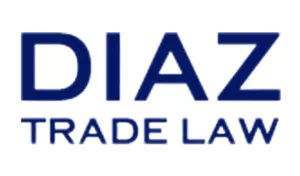Diaz Trade Law is enthusiastic to announce that another one of their articles, "USMCA Import Considerations for Practitioners," was published by Bloomberg Law! Below is the article reproduced with permission for your reading pleasure. We'd love to hear your feedback!
You can read the article here, by clicking USMCA Import Considerations for Practitioners (where you'll have the ability to access all of the great hyperlinks).
On Oct. 1, 2018, the U.S., Mexico, and Canada finalized a new trade agreement to replace the North American Free Trade Agreement (NAFTA). The United States-Mexico-Canada Agreement became effective July 1, 2020. The following provides an overview of the major import-related changes in USMCA impacting the trade community and practitioners' tips to prepare for the new rules.
What Is the USMCA?
The purpose of USMCA is to align the trade agreement with the current trade environment. The agreement builds on and modifies the trade policies created in NAFTA, signed in 1994. Despite decades of success, various factors, such as the continuous migration of manufacturing jobs to Mexico, altered the dynamics, prompting a need to renegotiate the terms of NAFTA.
The goals of USMCA and NAFTA are similar: to level restrictive economic measures to better facilitate freer and fairer trade between the developed and developing economies of the North American nations. Since each party ratified the agreement, all three countries began preparing domestic industries and governmental institutions for its implementation date of July 1, 2020.
USMCA is set to expire 16 years after its date of implementation and may be renewed for an equal period of time. Renegotiation will be considered by a joint review no later than six years after its entry into force to determine if renewal would be ideal in the future.
Compliance Resource for the Trade Community
Although USMCA is made publicly available by the Office of the United States Trade Representative, the text does not provide the practical requirements importers, exporters, and manufacturers must comply with to claim preferential treatment. While most of the trade community relies on the supporting USMCA Uniform Regulations, these will be issued July 1, 2020, when the agreement becomes effective. The uniform regulations will be included in the new Part 182 of Title 19, Code of Federal Regulations 182 (19 C.F.R. 182). Until then, U.S. Customs and Border Protection (CBP) has published Updated Interim Implementation Instructions via the Cargo Systems Message Service (CSMS # 43062320). The instructions provide a preview of how CBP intends to carry out USMCA and provides early guidance on the new requirements under the USMCA, including information on claiming USMCA preferential treatment, compliance, and other requirements. Note that these implementation instructions are not final and subject to change. The final implementing instructions will be released prior to the date the USMCA enters into force and will provide the Trade and Field with additional details on the USMCA entry, compliance, and other requirements. The Harmonized Tariff Schedule of the United States will be amended effective, July 1, 2020 to include General Note 11 (GN11) with information on the USMCA rules of origin, product specific rules, and other requirements. Additional resources are available at CBP's USMCA webpage.
Practitioner's Tip
CBP launched an internal USMCA Coordination Center including 10 individuals from trade policy, operations, import specialists, legal, and auditing various backgrounds within CBP. The USMCA Center will ensure, coordinate, and guide the implementation of the USMCA for CBP and stakeholders. Importers should communicate with their assigned Centers of Excellence and Expertise regarding their specific importations as the USMCA Center works with the CEEs.
USMCA Versus NAFTA
Although pundits and economists debate both the need and the expected impact of USMCA, the agreement is essentially just a renegotiated NAFTA, with much of the original framework remaining intact. The following are key changes that will impact importers:
Eligible Articles
- Tariff items eligible for preferential tariff treatment under USMCA will have a Special Program Indicator (SPI), 'S,' which will be reflected in the special column of the HTSUS (instead of CA and MX).
De Minimis Rule
- USMCA raises the de minimis threshold from 7% to 10%.
- For de minimis shipments, goods valued at $800 USD or less, may enter duty-free into the U.S.
- The Mexico de minimis level is now $117 USD for customs and $50 USD for taxes.
- Canada raised its de minimis level to C$150 ($117 USD) for customs, from C$20 earlier, and C$40 for taxes.
Practitioner's Tip
These changes will benefit small and medium sized enterprises (SMEs) and e-commerce businesses as their shipments within these values would boost their opportunity to join cross-border trade.
Marking Rule
- For goods imported into the U.S. from Canada and Mexico, USMCA partially adopts NAFTA's Marking rules codified in 19 C.F.R. 102 by eliminating NAFTA's qualifying goods requirement.
- Under USMCA, a good imported into the U.S. does not need to first qualify to be marked with a country of origin of Canada or Mexico (as was the case in NAFTA) in order to receive preferential tariff treatment under USMCA.
- For goods imported into the U.S. the country of origin marking of the good must be in accordance with CBP's country of origin marking regulations found in 19 C.F.R 134(b); which provides, in part, "country of origin" means the country of manufacture, production, or growth of any article of foreign origin entering the U.S. Further work or material added to an article in another country must effect a substantial transformation in order to render such other country the "country of origin."
- For customs purposes a "substantial transformation" means that the good underwent a fundamental change likely as a result of processing or manufacturing in the country claiming origin. A fundamental change typically occurs in form, appearance, nature, or character, which adds to the product's value an amount or percentage that is significant in comparison to the value which the good (or its components or materials) had when exported from the country in which it was first made or grown. Usually a new article of commerce with a different name is found to result from any process that customs decides has brought about a "substantial transformation" in the pre-existing components.
Click here to continue reading . . .
Originally published in Bloomberg Law
The content of this article is intended to provide a general guide to the subject matter. Specialist advice should be sought about your specific circumstances.


